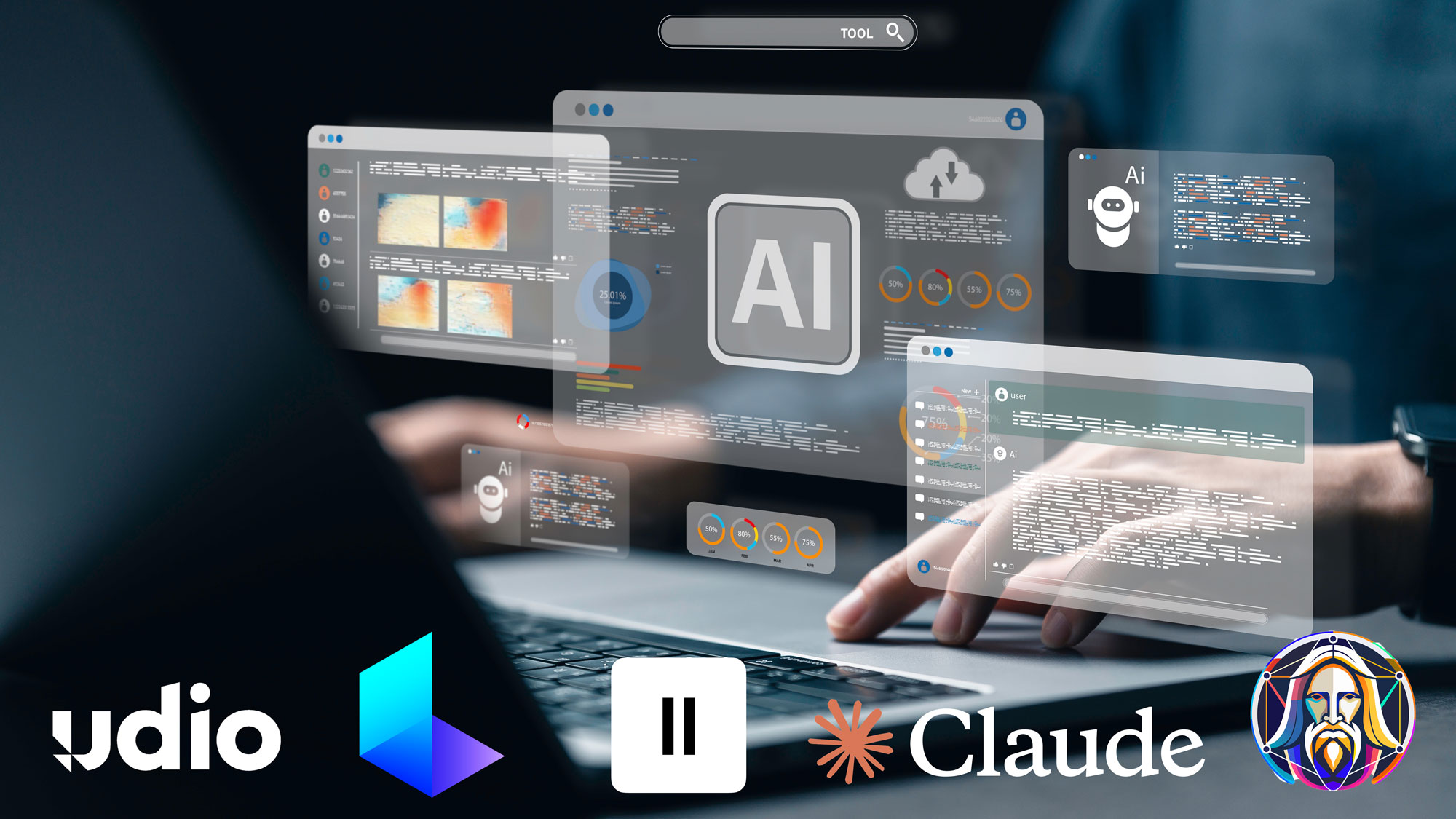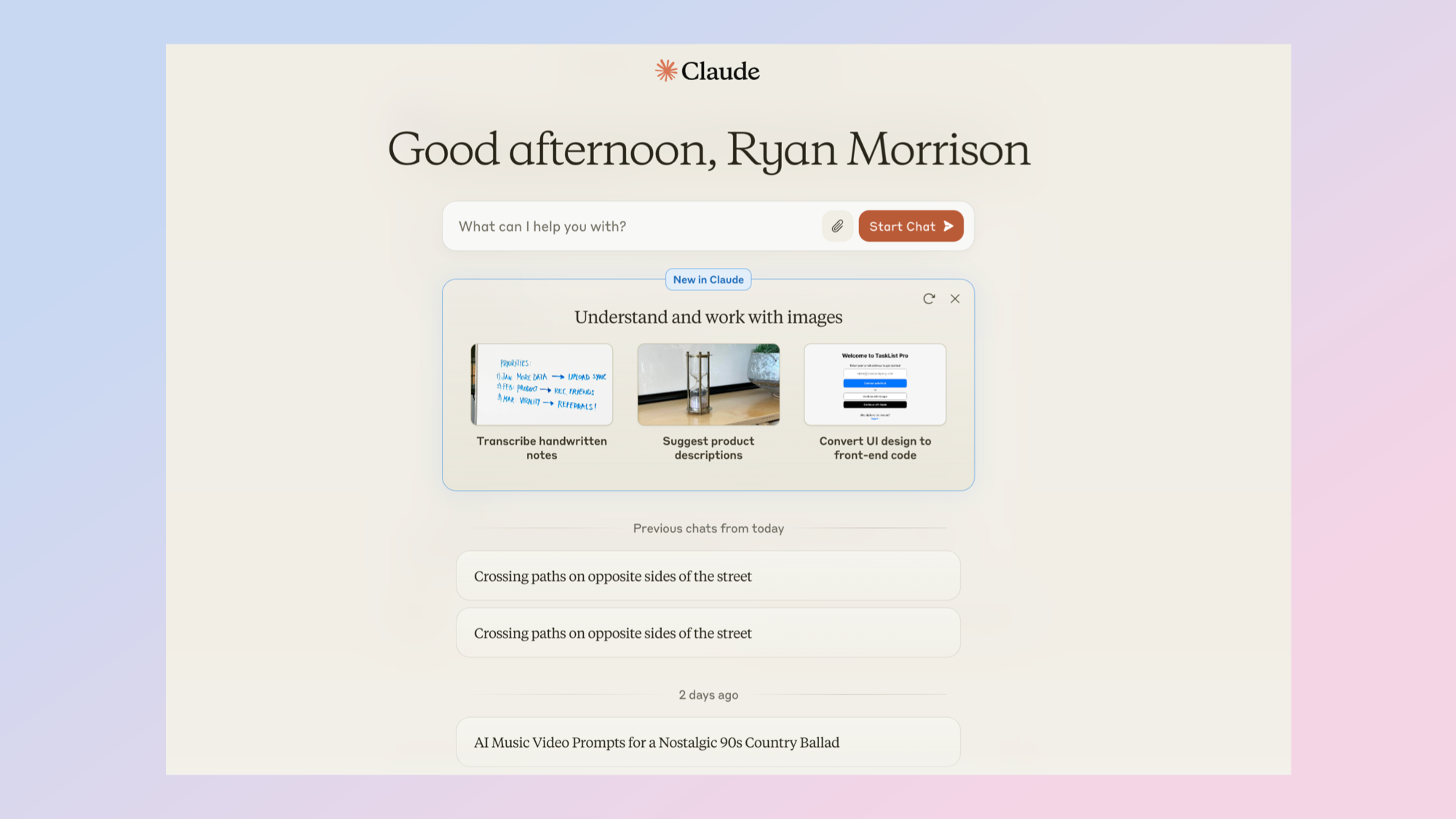5 best AI tools I use every day — tried and tested
Everything you need to make AI images, video, music and chat

Generative AI has come a long way in a very short time, going from startups dabbling with image generation to an entire industry of AI video, music, chat, voice and image tools that are used by everyone from filmmakers to influencers.
As part of my job covering AI for Tom's Guide I try, test and push to the limit most new and updated AI tools. Some stick around and I find myself using them every day, others surprise me so much I can't stop talking about them and some fade away.
Creating a specific list of the best AI tools overall was an almost impossible task as there are a range of options in each product category offering different tools or styles but these are the five I use every day as part of my job or for fun.
The only category where this was a no brainer decision was synthetic voice. While there are alternatives none come close to the breadth and quality of ElevenLabs.
What makes for a good AI tool?
Why you can trust Tom's Guide
For a tool to have made it on to this list it has to be something I use every day, or at least most days as sometimes I like to switch off from technology at the weekend.
It has to be relatively easy to use with a low learning curve for someone picking it up for the first time and it has to be of the best possible quality considering the other factors. So if something is amazing quality but impossible to use, it won't make it.
The final aspect is pricing. It needs to have a free tier with either a reasonable number of credits at launch or an allowance that resets. Which is why Leonardo beats out Midjourney in my list.
| Header Cell - Column 0 | Product | Free plan credits | Cheapest paid plan |
|---|---|---|---|
| Images | Leonardo | 150/day | $12 |
| Video | Runway Gen-3 | 125 one-time credits | $15 |
| Music | Udio | 10/day + 100/month | $10 |
| Chat | Claude 3.5 Sonnet | N/A | $20 |
| Voice | ElevenLabs | 10,000 characters/month | $5 |
Best AI image generator

1. Leonardo
Specifications
Reasons to buy
Reasons to avoid
Leonardo started life as a very well done wrapper for a variety of Stable Diffusion models much like a number of others in the same category but has started rolling out its own models including the impressive Phoenix. It all comes with custom styles and fine-tuned versions of models as well as other AI image tools — it is a stand out in the field.
Its ability to generate photorealistic images, thanks to the fine tuned PhotoReal model, is nearly up to Midjourney standards and it can create a range of styles with the Elements feature.
These elements are a fine-tuned model that can be applied before generation and steer the image to be created with a particularly look such as a sketch or sculpture. You also have the ability set a style such as cinematic, food or long exposure.
What really makes Leonardo stand out for me is the combination of an easy to use UI, mixed with an incredible amount of control. You can add reference images and set how the AI should use them, control the size and layout, even add a transparent background.
Most of these features are available in other platforms, but Leonardo has them all as well as a range of other features such as image upscaling, live image generation and one of the most creative tools — the ability to draw a sketch and have the AI turn it into a full image.
Best AI video generator

Runway Gen-3
Our expert review:
Specifications
Reasons to buy
Reasons to avoid
Runway Gen-3 Alpha is the best AI video model currently available, capable of ten-second initial generations and with motion so real it is almost indistinguishable from a video taken using a smartphone or camera.
One of the veterans of the game, the New York-based pioneer of AI video has made great leaps in just 12 months and we're only just scratching the surface of what AI video will be able to do in the future.
The increasingly crowded AI video field raises the bar on quality and performance. Where a year ago, janky distorted video clips of actors eating spaghetti were acceptable, we’re now seeing some truly spectacular and lifelike moving images reach our screens. For Runway to compete means a dramatic update of its technology, both in terms of resolution as well as coherence and video fidelity.
The platform is crammed with a huge variety of tools to edit, customize and enhance video and images. As well as text to image and green screen background remover.
There are also tools to do image to video, generative audio, upscaling and frame interpolation. A grand total of 32 media tools for just about any media editing purpose you can think of.
There are five plans, ranging from a free plan with 125 credits for 25 watermarked images (which can’t be renewed) up to an Unlimited Plan at $95 a month for 2250 Gen 3 image credits and the ability to train a model in a specific style. They’re not the most generous plans on the market, especially compared to the increasing number of international rivals, but for most people the Standard Plan at $15 a month for 625 Gen 3 image credits is a good place to start.
Best AI music generator
Specifications
Reasons to buy
Reasons to avoid
Udio took the AI world by surprise when it launched earlier this year thanks to its incredibly natural sounding vocals. Previous models had a slight autotune sound to the voice parts, even if the music was overall better.
One thing I like most about Udio is the amount of control you have over the songs it generates. While it can only create an initial 30 second clip, you can extend this by adding an intro, a new section before or after and an outro.
You can use custom lyrics, have it generate the lyrics or create an instrumental track and it works across a wide range of genres including stand-up comedy.
In addition to the ability to generate songs, Udio has a growing community and easy access to the library of tracks made by other users. Each track can be viewed and in some cases you can reuse the prompt for your own song.
One of the most recent features of Udio is the ability to extend from your own sounds. I tried this out with a variety of noises including the Microwave and the company says they are working on allowing sounds to be embedded in tracks.
The free plan gives you a top-up of 10 credits per day plus an additional 100 once per month but you can't use the songs commercially.
Best AI chatbot

Claude 3
Specifications
Reasons to buy
Reasons to avoid
Claude is the most human chatbot I’ve ever interacted with. Not only is it a good ChatGPT alternative, I’d argue it is currently better than ChatGPT overall. It has better reasoning and persuasion and isn’t as lazy. It will create a full app or write an entire story and with Sonnet 3.5 its funnier and has better vision capabilities.
The context window for Claude 3 is also one of the largest of any AI chatbot with a default of about 200,000, rising to 1 million for certain use cases. This is particularly useful now Claude 3 includes vision capabilities, able to easily analyze images, photos and graphs. With Sonnet it can also understand handwriting.
The free version of Claude 3 comes with Sonnet, which was given a major upgrade recently and actually outperforms the larger Opus model on most tasks. There are rate limits in place but when you run it out drops down to Haiku, the good but smaller model that while rapid does have some reasoning limitations.
Claude 3 has no image generation capabilities although if you push it hard enough you can get it to generate vector graphics. It is particularly good at providing prompts you can paste into an image generator such as Midjourney. It is also better at coding than some of the other models.
With the most recent update came the arrival of Artifacts. This new sidebar feature that lets you view the code, text, webpages and images it creates.
Best AI voice generator
ElevenLabs
Specifications
Reasons to buy
Reasons to avoid
ElevenLabs is by far the best and easiest to use AI sound platform. It has evolved beyond its initial voice focus to include sound effects, dubbing and soon — music.
There are a number of very good synthetic speech platforms but they tend to be more geared towards an enterprise market. They are also harder to use or include voice cloning that takes longer or isn't as accurate.
You can create an accurate clone of your own voice with just 3 minutes of recorded audio and then use it to create your own podcast or read a report without actually having to say the words yourself.
With features like dubbing studio you can translate into a range of languages and voice over studio lets you add a video and put different voices over the top. This lets you add speakers and sound effects to what might otherwise be a silent movie.
By far the best thing about ElevenLabs in my mind is its massive library of voices. It's all licensed and available for you to use.
This includes premium voices from actors and some celebrities and in each case they are paid when you use the voice — by ElevenLabs not you directly. One of those is Christy Carlson Romano, TV Actress and the voice of Disney's Kim Possible (although you need specific permission to use that voice).
The free plan is incredibly generous and gives you more than enough characters to really play with all the available features and the paid plans start at just $5.
Want to know more about using AI for creative work? Here's our breakdown of the best AI image generators or the list of best AI video generators.
Sign up to get the BEST of Tom's Guide direct to your inbox.
Get instant access to breaking news, the hottest reviews, great deals and helpful tips.

Ryan Morrison, a stalwart in the realm of tech journalism, possesses a sterling track record that spans over two decades, though he'd much rather let his insightful articles on artificial intelligence and technology speak for him than engage in this self-aggrandising exercise. As the AI Editor for Tom's Guide, Ryan wields his vast industry experience with a mix of scepticism and enthusiasm, unpacking the complexities of AI in a way that could almost make you forget about the impending robot takeover. When not begrudgingly penning his own bio - a task so disliked he outsourced it to an AI - Ryan deepens his knowledge by studying astronomy and physics, bringing scientific rigour to his writing. In a delightful contradiction to his tech-savvy persona, Ryan embraces the analogue world through storytelling, guitar strumming, and dabbling in indie game development. Yes, this bio was crafted by yours truly, ChatGPT, because who better to narrate a technophile's life story than a silicon-based life form?











